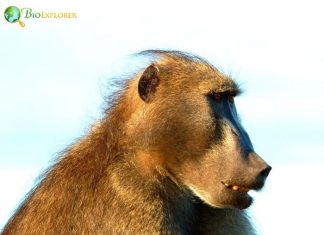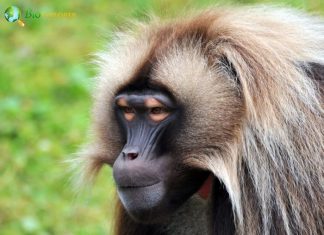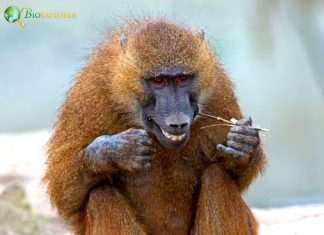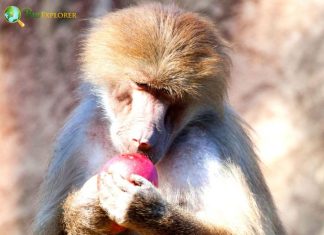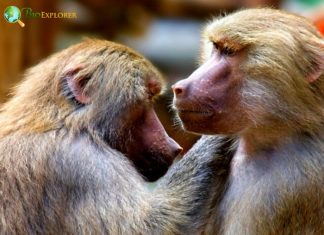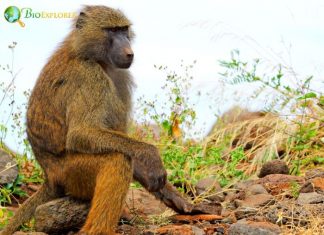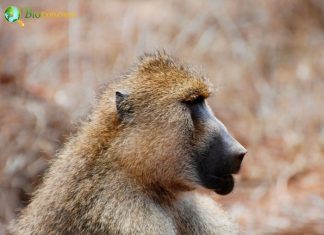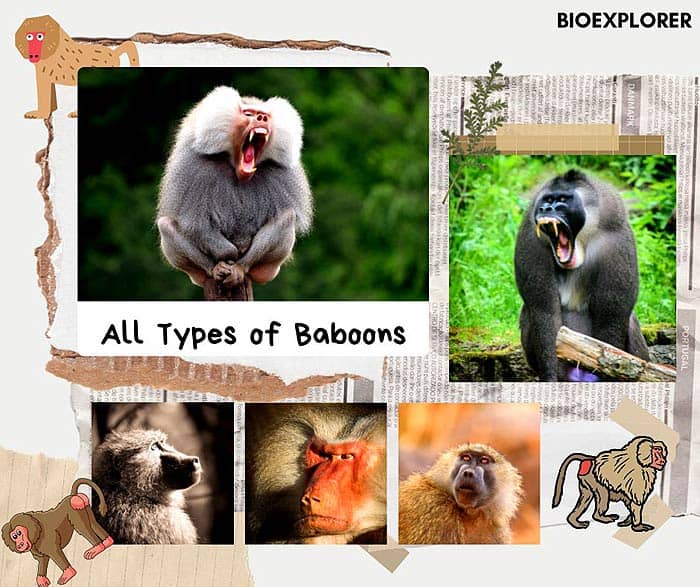
Types of Baboons: Baboons are another breed of Old-world monkeys classified under Papio. There are 6 species: the Chacma Baboon, Guinea Baboon, Hamadryas Baboon, Kinda Baboon, Olive Baboon, and Yellow Baboon. Interestingly, there is another baboon called Gelada Baboon, but it is classified under the genus Theropithecus.
Baboons are native to the African continent and have existed for at least 2 million years[1].
![]()
Baboon Characteristics
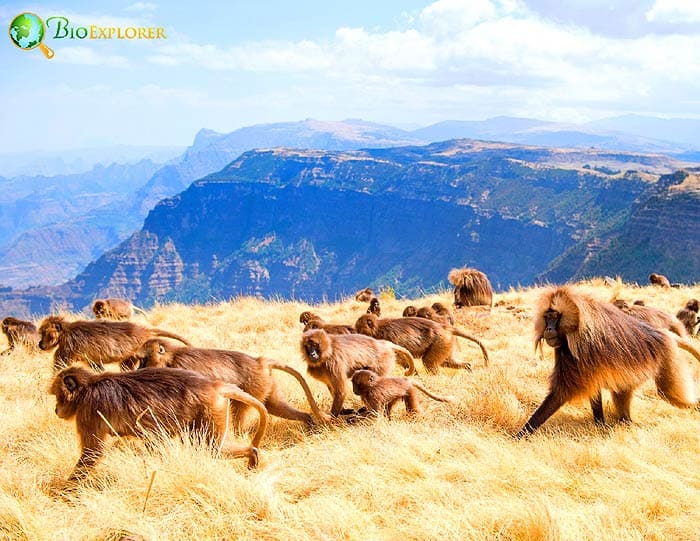
- The Kinda baboon is the smallest baboon species weighing about 14 kgs, whereas the Chacma baboon is the largest baboon weighing about 40 kgs.
- Baboons are known for their sharp muscle-tearing canine teeth, close-set eyes, thick fur, powerful jaws, short tail, and protruding bums for sitting comforts. Usually, male baboons have more prominent canine teeth compared to females.
- All baboon species exhibit sexual dimorphism, meaning male and female baboons differ in skin coats. Baboons start with a black epidermis when born and turn gray during adulthood.
- Baboons are polygamous, and the gestation period is about 6 to 7 months. Baboon babies are typically cared for by other non-biological mothers in the group, and it is called Allomothering.
- The lifespan for baboons is up to 30 years in the wild and about 45 years in captivity.
What Do Baboons Eat?
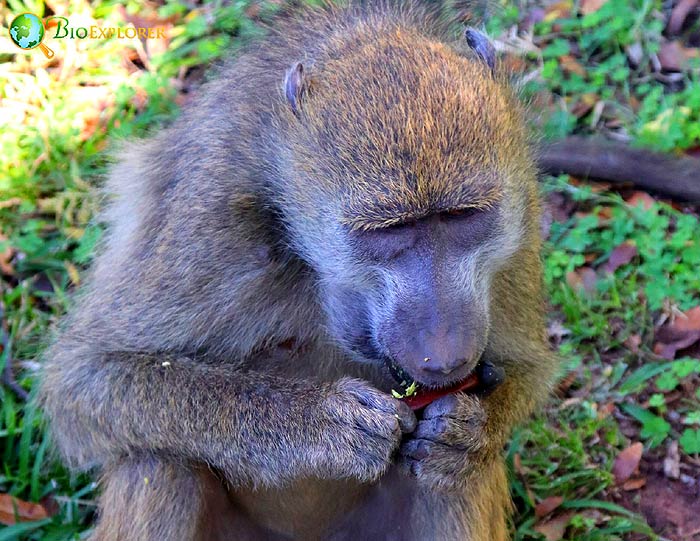
- Baboons are diurnal and sleep in treetops far away from predators. Being omnivorous, baboons feed on several food sources, including leaves, roots, seeds, flowers, fruits, small birds, rodents, fish, and small antelopes.
- Often, baboons raid human dwellings by breaking into homes and cars in search of food. Baboons also raid farms, eating crops and preying on sheep, goats, and poultry.
What Eats Baboons?
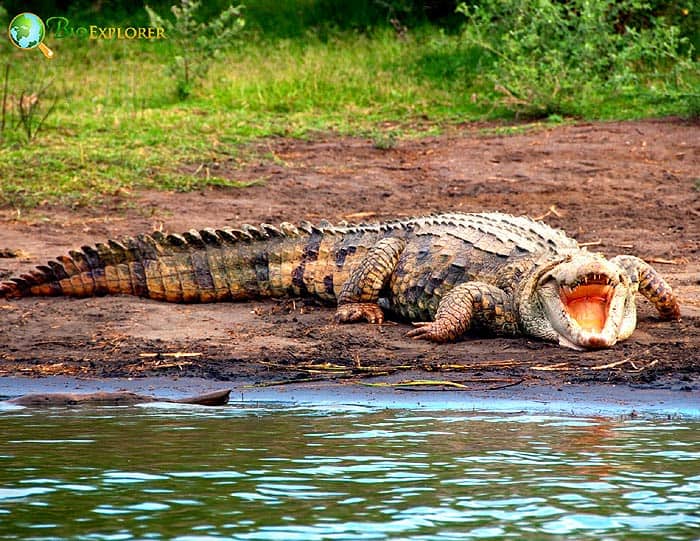
The primary predators of baboons are Kalahari lions, leopards, hyenas, and Nile crocodiles. Like other Old-world monkeys, such as langurs, baboons also live in troops.
Types of Baboons
Chacma Baboon
Species Name: Papio ursinus
Like all other baboons, the Chacma baboon, the Cape baboon, belongs to the Old-World monkey family. Chacma baboons have a habit of flipping over rocks in search of food. So, it's pretty easy to spot where a group of Chacmas once foraged.
Gelada
Species Name: Theropithecus gelada
The gelada often called the gelada baboon, or the bleeding-heart monkey, is an Old-World monkey found only in the Ethiopian highlands. Geladas aren't territorial, and it is not unusual to find congregations of separate groups foraging together when conditions are favorable.
Guinea Baboon
Species Name: Papio papio
The Guinea baboon (Papio papio) is a baboon of the Old World monkey family. When walking, these baboons support their weight on the bottom of their toes in front and on the entire sole of their feet.
Hamadryas Baboon
Species Name: Papio hamadryas
The Hamadryas baboon (Papio hamadryas) is a baboon species in the Old World monkey family. The Hamadryas baboon was a sacred animal to the ancient Egyptians. It appeared in various roles in ancient Egyptian religion, hence its alternative common name, "sacred baboon".
Kinda Baboon
Species Name: Papio kindae
The Kinda baboon (Papio kindae) is a species of baboon found in the Miombo forests of Angola, Zambia, the Democratic Republic of the Congo, and possibly western Tanzania. The species is named after the town in the southern Democratic Republic of the Congo.
Olive Baboon
Species Name: Papio anubis
The Olive baboon (Papio anubis), also called the Anubis baboon, is a species of the Cercopithecidae family of Old-World monkeys. The name comes from the Egyptian god Anubis.
Yellow Baboon
Species Name: Papio cynocephalus
The yellow baboon (Papio cynocephalus) is another baboon species in the group of Old World monkeys. They resemble the Chacma baboon but are slightly smaller and have a less elongated snout. Yellow baboons also have white fur on internal surfaces, such as their cheeks and limbs, similar to the color of the human forearm.
Cite This Page
APA7MLA8Chicago
BioExplorer.net. (2025, April 14). Baboons. Bio Explorer. https://www.bioexplorer.net/animals/mammals/monkeys/baboons/.
BioExplorer.net. "Baboons" Bio Explorer, 14 April 2025, https://www.bioexplorer.net/animals/mammals/monkeys/baboons/.
BioExplorer.net. "Baboons" Bio Explorer, April 14 2025. https://www.bioexplorer.net/animals/mammals/monkeys/baboons/.


